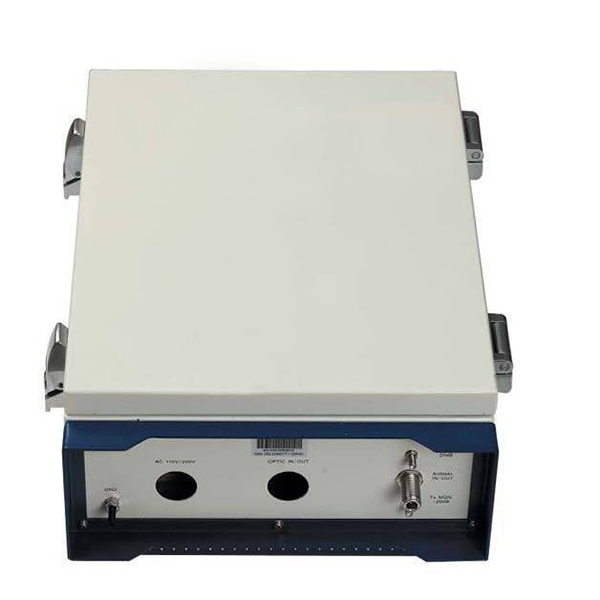What are the Essential Components and Applications of a Fiber Optic Repeater?

Introduction to the Essential, Yet Elusive, Nature of Fiber Optic Repeaters
Fiber optic repeaters, while seemingly simple components in the vast tapestry of modern telecommunications, represent a sophisticated interplay of optical and electronic engineering. Their function, seemingly straightforward—to regenerate and retransmit optical signals—belies an intricate mechanism demanding precision and robustness. This exploration delves beyond superficial understanding, examining not only the essential components but also the nuanced applications and inherent limitations of these critical devices.
Defining the Indefinable: A Deeper Dive into Functionality
A fiber optic repeater is not merely a signal booster; it's a complex system that combats the inevitable attenuation and dispersion of light signals propagating through optical fibers over extended distances. It meticulously restores the signal's amplitude and timing, ensuring faithful data transmission across vast geographical spans and complex network topologies. Its importance transcends mere signal enhancement; it is the linchpin of high-bandwidth, long-haul communication.
Dissection of the System: A Component-Level Analysis
The seemingly simple architecture of a fiber optic repeater belies its sophisticated internal workings. Each component plays a critical role in the intricate dance of signal regeneration:
-
Optical Receiver: This is far more than a simple photodetector. It incorporates advanced techniques like avalanche photodiodes (APDs) or PIN photodiodes, coupled with sophisticated low-noise amplification, to accurately translate the faint optical signal into an electrical equivalent, meticulously minimizing noise and distortion introduced during the conversion process.
-
Signal Amplifier: Here, the heart of the repeater beats. The choice of amplifier type – erbium-doped fiber amplifiers (EDFAs), semiconductor optical amplifiers (SOAs), or others – significantly impacts performance characteristics such as gain, noise figure, and dynamic range. Sophisticated equalization techniques are often employed to compensate for chromatic and polarization-mode dispersion.
-
Optical Transmitter: This component, frequently employing advanced laser diodes or light-emitting diodes (LEDs), must meticulously convert the amplified electrical signal back into a high-quality optical signal. Precise control of the optical power and spectral characteristics is crucial to ensure reliable transmission across the subsequent fiber segment.
-
Power Supply: Beyond simply providing power, the power supply within a fiber optic repeater needs stringent regulation and redundancy measures to maintain stable operation and prevent signal degradation during power fluctuations. The importance of uninterruptible power supplies (UPS) cannot be overstated in critical applications.
The Choreography of Signal Regeneration: A Step-by-Step Deconstruction
-
Signal Reception: The optical receiver captures the attenuated optical signal, converting it into an electrical signal. This conversion process is highly sensitive to noise; advanced filtering and signal processing techniques are employed to minimize interference.
-
Signal Amplification: The electrical signal is then amplified, restoring its strength. The precise gain adjustment is critical; too much amplification introduces excessive noise, while insufficient amplification results in signal degradation.
-
Signal Re-transmission: The amplified electrical signal is converted back into an optical signal using the optical transmitter, ready for transmission over the next fiber segment. This conversion process requires careful modulation and alignment to maintain signal integrity.
Applications: Beyond the Obvious
The utility of fiber optic repeaters extends far beyond simple long-distance communication:
-
Long-distance Communication: They are the backbone of submarine cable systems, transcontinental links, and long-haul terrestrial networks, enabling high-bandwidth data transmission over thousands of kilometers.
-
Fiber Optic Networks: They form an integral part of metropolitan area networks (MANs) and wide area networks (WANs), ensuring reliable communication within and between geographically dispersed areas.
-
Data Centers: High-density data centers rely heavily on repeaters to connect servers and storage devices within the facility, mitigating signal loss over extensive internal cabling.
-
Industrial Automation: In demanding industrial environments, repeaters enable reliable communication between remote sensors, actuators, and control systems, ensuring operational efficiency and safety.
Advantages and Limitations: A Balanced Perspective
While indispensable, fiber optic repeaters are not without limitations:
Benefits: Extended reach, increased bandwidth, improved signal quality.
Drawbacks: Increased cost, complexity, potential points of failure, power consumption.
Conclusion: A Look Back and Forward
Fiber optic repeaters are fundamental components of modern communication infrastructure. Their complex design, incorporating advanced optical and electronic technologies, ensures the reliable transmission of data over long distances. Understanding their intricacies is crucial for anyone involved in the design, implementation, or maintenance of high-speed fiber optic networks.
Future Prospects: Innovation on the Horizon
Ongoing research focuses on developing more efficient, cost-effective, and robust repeaters using advanced materials and signal processing techniques. The integration of optical amplifiers directly within the fiber itself, and the development of coherent optical communication systems promise further advancements in long-haul high-capacity communication.

 Mobile Signal Booster
Mobile Signal Booster